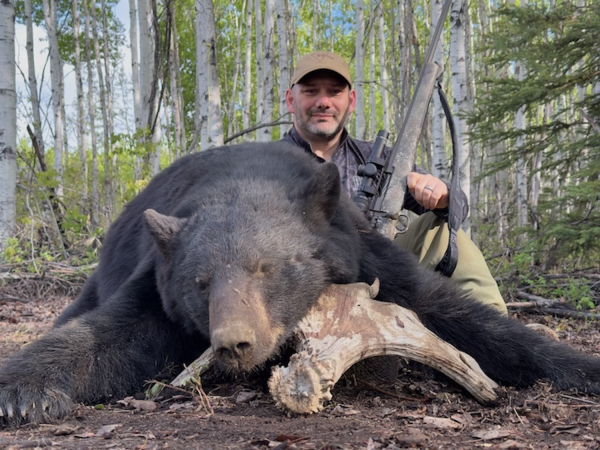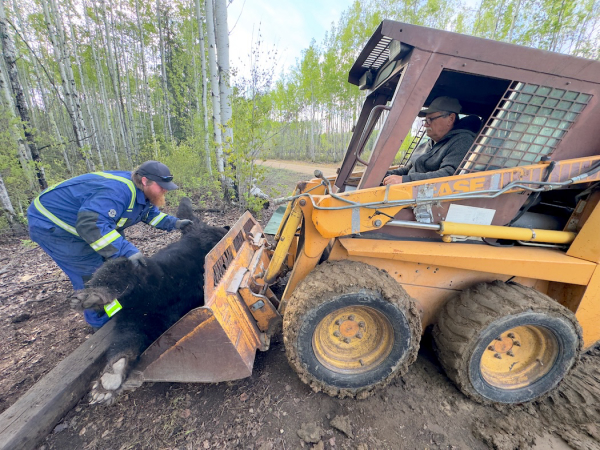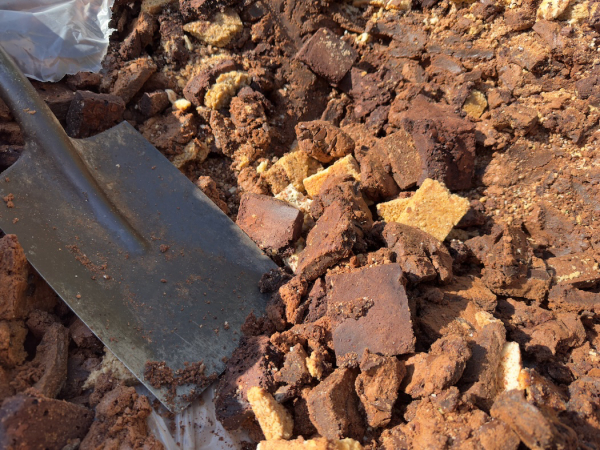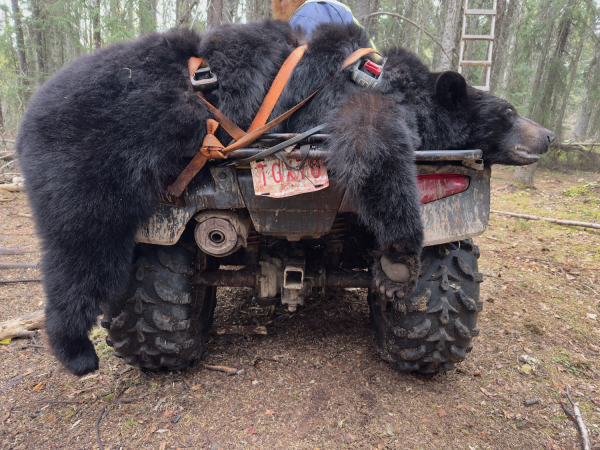
Bear guides are a different breed. The good ones don't just know how to hang bait or spot rub marks on a spruce tree; they know how to read the apex predator.
Despite being new to guiding bears, Erik Mack is one of the good ones. He didn't fall into this work; he was raised in it. Erik grew up riding shotgun with his dad, Darrin Mack, guiding whitetail hunters across Alberta. Darrin wasn't just a guide; he was a mentor, a steady hand, and a constant presence in Erik's life until his passing in 2018.
That loss hit hard. It still does.

But like most families built around hunting, tradition doesn't end with a loss; it adapts and continues. For Erik, that meant stepping into the next chapter of guiding with his uncle, Wally Mack, the world-renowned bear outfitter behind W and L Guide Services.
Some families pass down heirlooms. The Macks pass down instincts, values, and the knowledge of what it takes to guide someone safely and successfully in some of the wildest country in North America.
As for learning to guide bears? Well, that's a Mack family specialty.

"We start preparing in March," Erik told me, sitting at a camp picnic table after a long day of checking bait sites. "You start thinking about baits, hauling supplies, getting the barrels ready. It's not something you do halfway."
When hunters like me show up in mid-May, the work has been going on for weeks. Barrels are filled. Beavers are hung (yes, beavers, more on that in a second). Tree stands are placed, cleaned, repaired, or updated over trails paved by silent, heavy feet.
Bear baiting is equal parts science, art, and good old-fashioned tinkering.
The team at W and L Guide Services use a mix of oats, fryer oil, and a local special: brownies. They come in bulk, shipped by the pallet. The oil makes the mix sticky and smelly. The brownies keep the bears coming back. The oats? Cheap filler that gets the job done.

And then there's the beaver, the most effective natural scent lure in the bear guide's arsenal.
"A bear won't walk past a hanging beaver," Erik said. "They'll circle. They'll investigate. It doesn't matter what time of day it is; if there's a beaver on a site, the bear will find it."
Once a bait starts getting hit, the barrel is knocked over, the bait is scattered, and it is torn up, they start reading the sign. Then come the cameras. Then the patterning. Finally, the stands are placed, and the hunters are brought in.

Unlike deer hunters, who can be picky to a fault and might hold out until the last minute for a record book buck, bear hunters usually arrive with a different mindset. But they still need to learn fast. And the first lesson? Bears are smarter than most give them credit for.
"A big bear will circle a bait from 60 yards out," Erik said. "If he catches movement or hears something he doesn't like, he'll wait until dark. That's why noise is the dealbreaker more than scent or any gadget."
Forget the UV light theories and carbon suits. Bears are used to human scent around bait sites. But movement? That's different, and it's a red flag for bears.
Even scent control, that sacred cow of bowhunters everywhere, barely registers for black bears.
"They've got an incredible nose," Erik said. "But in 30-plus years of bear guiding, we've never seen scent control make a real difference."
Erik doesn't carry a rifle when baiting. Most of the time, he doesn't need to.

"They know we're there to feed them," he said. "We're the dinner bell. And most bears? They're more scared of us than we are of them."
Still, the respect laced with fear is genuine, as it should be. High Level, Alberta, isn't a zoo or a sanitized nature hike. They can kill you, and they will if you surprise the wrong one at the wrong time.
Erik's been bluff-charged before, especially by sows with cubs. And when it happens, it's a heart rate spike you don't forget.
"You don't turn your back," Erik said. "You shuffle your feet. You show them you're the bigger one. You make noise. And they usually back off."
It's part of the dance. And like any dance, knowing the rhythm keeps you on your feet.
Erik recommends a .243 Winchester as the minimum caliber for a bear rifle in Alberta (also the legal minimum), but the real key is shot placement. They've had guys hunt with everything from slug guns to .470 Nitro Express rifles, and the end results always come down to knowing your weapon and putting your shot where it counts.
Bowhunters? Stick to fixed blade broadheads. Erik doesn't trust mechanicals, and close-range shots, pass-throughs, and double lung hits matter.
Bears are beautiful. Mysterious. Sometimes, even a little eerie. They come in silently, like shadows. Watching one feed, pace, or test your scent line can be unnerving in a way that no other North American game animal manages.

"They're geniuses in their own way," Erik told me. "They'll sneak in, and you won't hear them. You turn, and there they are."
And yet, despite that eerie intelligence and the real risk that comes with hunting something capable of killing you, bear hunting is more fun than fear. It's pure excitement. It's clean food. It's the feeling of being in a wild, unmanaged country where bears aren't pets, and the forest doesn't need to remind you it's real. You feel it in your spine.
I asked Erik what hunters should look for when shopping for a bear guide. His answer was as grounded as the man himself.
"Permanent stands. Well-established baits. A reputation for safety. And someone willing to work with all types of hunters of different ages, abilities, and experience levels. That's what matters."
Some outfitters cut corners. But not up here, not with W and L Guide Services. Not with Erik Mack. He may be early in his bear guiding career, but he's been earning his boots in the bush his whole life.

So why guide?
Erik's not in it for the racks or the hero shots. For him, the best moments come from watching first-timers get their bear. Watching them light up when it all comes together. The nerves. The shot. The celebration.
"That smile after they take their first bear. That sticks with you," he said. "It's why we do this."
If you've never hunted black bears and never felt that pause when a 300-plus pound ghost steps into the clearing, you should. And if you're looking for a guide who won't just get you a bear but teach you the world behind them?
Erik Mack's your man.
Just don't forget the bug spray.